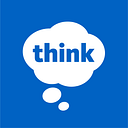4 Free Project Retrospective Tools for Remote Teams
By Megan Wine | Originally published on the Think Blog
Like many others, I’ve had to adapt to the new normal that is working from home. And as a project manager, I’ve had to quickly find new ways to effectively manage entirely remote teams. While all Think Company project managers have had some experience with this, I have yet to experience conducting a project retrospective with a completely remote team. This got me wondering: what kind of tools might be out there to conduct this type of activity?
One of our core values is continuously improve. To improve both our clients’ and our own working experience, we take time to reflect on projects and learn from our experiences by conducting project retrospectives. We typically conduct these meetings at the end of each project, but depending on how long a project runs, we may also conduct them midway through. There are many different ways to conduct a project retro, but the main goals are to discuss the details of the project, identify key takeaways, and document lessons that will help us improve future work.
I was looking for an online project retrospective tool that:
- Offered a free version
- Offered project retro templates to choose from
- Allowed for team collaboration
- Was easy to use
The options below stood out to me as valid resources that I will be bookmarking for upcoming remote project retrospectives. I also want to note that while we’re looking into remote-friendly tools out of necessity now, we’re learning so much that will help us be more effective when we’re able to collaborate in-person again.
Fun Retro
Fun Retro is a collaborative tool that was at the top of my list-and what I’ll be using for my next retro. I found the user experience to be smooth, quick, and easy. Whoever is leading the retro will need to create an account in order to start a retro board. However, if you have a Google account, there is an easy single sign-on option so you don’t have to remember yet another password.
Once the board is set up, participants do not need to have an account in order to participate. This was a huge plus to me. Fun Retro offers retro templates to choose from, but you can also select from other user-created templates. Some feature highlights of this tool are:
- Cards can be public or anonymous to other participants
- Participants can hide their cards until the group is ready to discuss a particular topic
- Participants can upvote and downvote as well as comment on other participant cards
- Cards have a drag and drop feature enabled in case it’s determined that it’s better suited under another category
- Boards can be exported
- There’s a built-in timer
Fun Retro is free for up to three retro boards. If you need to create a new board, you can simply delete an inactive board to continue using the free version.
From my research notes: It took me about 5 minutes to set up a board and determine how to use it. Lots of features!
Retro Tool
While Retro Tool may not look as nice as some of the other options or have as many features, it was the most straightforward tool of the bunch. You don’t need an account, but that also means your work won’t be saved for later reference. Other highlights of this tool include:
- Pre-made templates
- Participants can hide their cards until the group is ready to discuss a particular topic
- Participants can upvote and downvote other participant cards
- Cards have a drag and drop feature enabled in case they need to be moved around
- Boards can be exported
- There’s a built-in timer
From my research notes: Gets the job done.
Miro
I explored Miro (and the next tool) because they are frequently used on our team, and since I already had an account, I wanted to see how Miro stacked up when it came to non-typical use cases. You will need to have an account in order to use Miro, but there is a single sign-on option if you have a Google account. Participants will also need to have an account, unless you upgrade to a paid plan option. A couple of the limited features offered with the free version of this tool are:
- Cards can be moved freely around
- Cards are all anonymous
- Boards can be exported
Miro only has one project retrospective template to choose from, and it’s similar to Fun Retro in that you can only have three active boards at a time.
From my research notes: More manual labor than some of the other tools, but allows for increased manipulation.
Trello
Trello users will need to have an account in order to use the tool, but as with the other account-required tools highlighted above, there is a single sign-on option for users who have a Google account. Participants will also need to have an account. Trello offers one template to choose from. Limited features of this tool include:
- Cards have a drag and drop feature enabled in case they need to be moved around
- Boards can be exported
From my research notes: Most teams have used it so they likely already have a login, and there isn’t much of a learning curve, but features are limited.
These are just a sampling of the project retrospective tools I explored, but there were strong benefits to each in terms of managing fully-remote project teams. I’m looking forward to testing them out in real-time and hearing feedback from my participants.
Originally published at https://www.thinkcompany.com on April 2, 2020.
